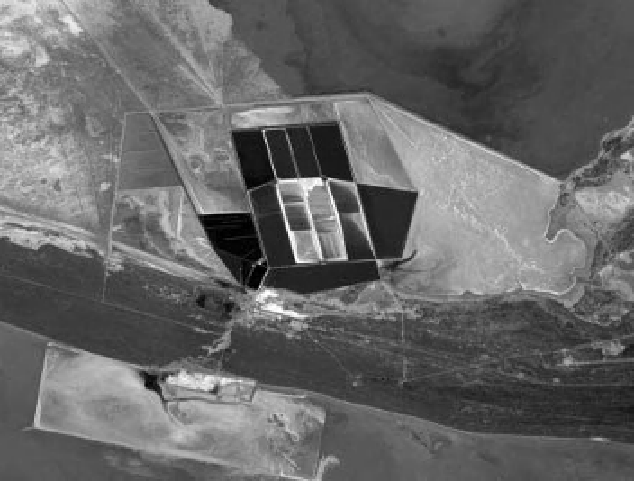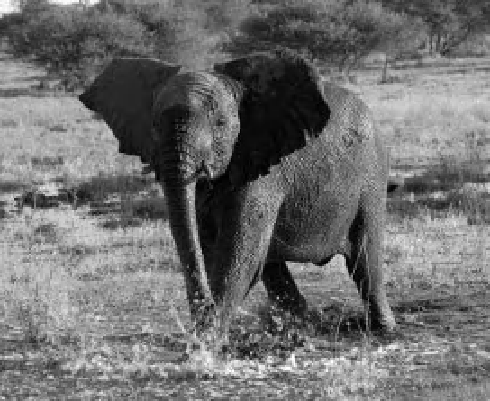Geoscience Reference
In-Depth Information
Figure 14-18.
View toward southwest of salt extraction pools, Sowa Pan, eastern portion of Makgadikgadi,
Botswana. Soda ash (sodium carbonate) and salt are produced from brine. Adapted from NASA Gateway to
Astronaut Photography of the Earth; ISS014-E-15732, March 2007
<
http://eol.jsc.nasa.gov/
>
.
to establish a National Wetlands Institute for
research and development ( Junk et al. 2009).
Such systematic scientii c monitoring should
aid conservation efforts, along with the basin's
recognition as a UNESCO Biosphere Reserve
in 2000 and the delineation of smaller protected
sites by individual countries within the larger
basin.
14.6 Summary
This chapter suggests that wetland policy across
the globe is far from uniform. While the second
half of the twentieth century saw signii cant
steps toward wetland conservation and protec-
tion, far more needs to be done to jumpstart
these efforts in areas of the developing world
including Africa, South America, and parts
of Asia. Two emerging philosophies appear
to guide wetland management. On the one
hand, the regulatory approach adopted by the
United States and other nations focuses on laws,
enforcement mechanisms, and penalties to
protect these habitats. Canada leads a second,
largely non-regulatory, approach designed to
build partnerships, and through incentives and
Figure 14-19.
Elephant taking a bath in shallow water
of the Okavango River delta, Botswana. Photo courtesy
of M. Storm.
Wetland cooperation between countries in
this region has thus far largely focused on
the development of the Paraná-Paraguay basin.
However, conservation and the sustainable
development of this ecosystem were given an
impetus through the establishment of the Pan-
tanal Regional Environmental Program in 2002
and the Brazilian government's decision in 2008







